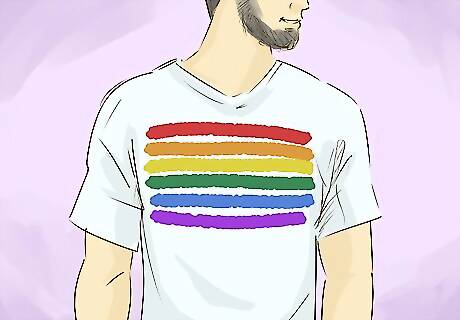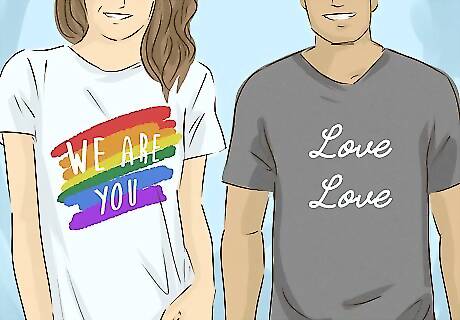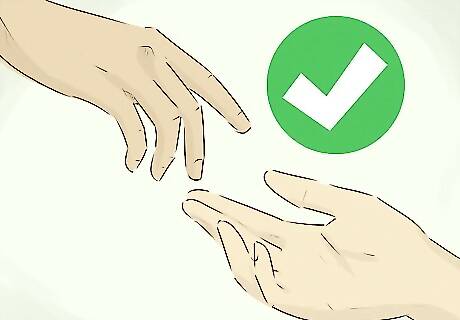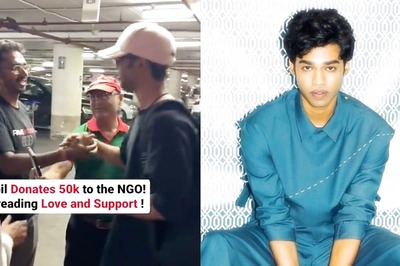
views
Giving Verbal Clues

Talk about people you find attractive. If you want to let people know how about your sexual identity without explicitly stating it, you can definitely work some casual hints into conversation. Maybe you want your best friend to know that you are a lesbian. Drop some clues by saying something like, “Did you see that girl sitting next to me in Biology class? Wow, I could get lost in those beautiful eyes!" If you are bisexual, you could say, “I’m not sure who I’m more into in La La Land: Emma Stone or Ryan Gosling!”

Talk about dating. Try to find a way to bring up romantic relationships in an everyday conversation. You can do this with friends or family. For example, if you’re working towards coming out to your sister, bring up the subject of dating. You could start by asking her how her relationship is going. If she’s dating a man and you identify as gay, you could say, “He’s such a great guy. I’d love to find a man to date who is just as funny as Josh.” You can also make it less specific. For instance, if you’re pansexual you could say, “Intelligence is the most important thing to me in a relationship. I’m much less interested in gender.”

Drop verbal hints if someone is hitting on you. Sometimes people just make an assumption that you are straight which could be annoying. For instance, if you are a single woman at a bar, it wouldn’t be unusual for a man to come up and offer to buy you a drink. It makes sense that you don’t feel like talking to a stranger about your sexual orientation. Try dropping some verbal clues. You could say, “I really mean it when I say you are definitely not my type. It’s not personal. I’m just positive you’re not my type.” Of course, if you're into the person you should feel free to flirt back!

Talk about LGBTQ celebrities. Pop culture is a great way to naturally bring up sexual orientation. You could make comments about famous people that you admire who are LGBTQ. This might be a good strategy for gauging how your family feels about people who are LGBTQ. Try saying something like, “I love how Ellen Degeneres really owns her sexuality! Maybe someday I’ll be as comfortable and confident as she is.”
Using Visual Hints

Wear rainbow clothing items. The rainbow is part of the flag that represents the LGBTQIA+ community. It has a lot of historic symbolism, and it is commonly recognized. Try incorporating some rainbow items into your wardrobe to show your pride. You can wear a rainbow scarf, t-shirt, or even sneakers. You can also wear rainbow accessories such as hats or bracelets.

Wear a message T-shirt. Shirts are a great way to drop hints. You might be wearing one because you are an ally, or maybe because you’re celebrating your own pride. It’s up to you if you want to tell people about your sexual orientation. If someone asks you about your shirt, this is a great way to start a positive conversation! Popular shirts say things like “Gender Roles are Dead,” “Love Knows No Gender,” or “Love is Love.”

Change your wallpaper to a photo of you and someone you are dating. You check your phone often, and other people are likely to notice your wallpaper when you pull it out. Maybe you are trying to find a way to tell your parents that you are dating someone of the same sex. Try putting a picture of you and your partner as the wallpaper. Choose a picture that looks like the two of you might be more than just friends. Maybe you’re looking into each other’s eyes or have your arms around each other.

Use flirtatious body language with someone you are attracted to. Maybe you want to let someone know that you are interested in them, but aren’t sure how to say it. For example, maybe you identify as gay, but have never dated another man before. You can flirt without having to specifically talk about your sexual orientation. Make eye contact and hold it for several seconds. Use casual touch. For example, reach out and touch their hand when they make a joke. Stand close to them when you are talking. Use discouraging body language if you want to nicely reject someone. Look away if they try to make eye contact. Turn your body away if they head your way.

Get involved with queer organizations. There are lots of ways to show your support of the LGBTQ community! Try finding a way to actively support these organizations. For example, you could volunteer at events such as your local pride parade. Or maybe you could volunteer to hand out literature at a street festival. People might ask you why you’re involved and your response is up to you.
Accepting Different Reactions

Accept that some relationships might change. Before you drop hints, be aware that relationships could potentially be different. If someone realizes that you are LGBTQ, it might cause strain. Sometimes friendships change. However, you should also know that sometimes relationships change for the better. For example, maybe the person you are interested in realizes that you two might work out as a couple. Some of your relationships may become strained, and it may be a while before they go back to normal.

Make a plan for coming out to your parents. Before you drop hints to your parents, make sure that you are prepared to have an honest discussion with them if they ask what your clues mean. Hopefully, your parents will be immediately supportive. Sometimes parents express shock, sadness, or even anger when they learn their child is LGBT. Your parents will likely have a lot of questions for you. Have some resources ready for them. For example, you can direct them to PFLAG's website. Make a safety plan just in case. If you think there is a chance your parents might react negatively, plan ahead and have a safe place to go. Ask a friend if you can stay at their house for a few days.

Find a support system. If you are worried about anyone’s reaction to your hints, it’s a good idea to have a support system in place. If you are already out to a friend or family member, let them know that you might need some extra support in the near future. You could also get support from your local LGBTQ community center.

Be patient while people process their feelings. Sometimes people need time to process information and how they feel about it. Some people will have a reaction, but they're not sure what to say. That's okay. Try to allow them space and time to work out how they feel. Understand that people won't always have a reaction to learning about your sexual orientation. Know that it is normal for people to change their initial reaction after they have fully processed your news. For example, maybe a friend initially acts withdrawn. They might be back to normal in a couple of days or weeks.




















Comments
0 comment